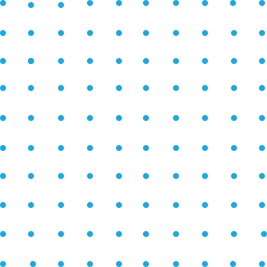Innovation Meets Art
When it comes to art, you might assume painting on a canvas is the only way to go. But there are alternative surfaces you can use, and one of those surfaces is ACM.
Below, you'll learn about the basics of ACM, why it's such an amazing place for art, and the different customization options when painting on an ACM surface for projects like barn quilts and more!


An Expert is just around the corner.
With over 100 years of combined product knowledge and industry experience, we are confident our plastics experts can help you find a solution for your application.
What is ACM?
ACM stands for aluminum composite material. It is made of two thin layers of aluminum on the outside with a core of polyethylene on the inside. They are known for being lightweight and durable, making them useful for indoor and outdoor applications.
Because they are durable and lightweight, you can find ACM across these semi-artistic applications:
You'll also find ACM used in more general construction projects due to their usefulness as wall lining and cladding. How does this make ACM useful as a painting surface? Short answer: it addresses some of the weaknesses of alternative art surfaces.
What are the Advantages of Using ACM Panels as Painting Surfaces?
ACM panels have these distinct advantages for painting:
Long-lasting: Plastic is known to last a long time, and ACM is no different. Using it as an artistic surface can preserve your art.
Environmental resistance: Compared to common art materials, plastic is better at resisting the elements. It can be durable in both indoor and outdoor environments.
Absorbent: ACM can be primed for both acrylic- and oil-based paints. This means it's ideal for supporting multiple types of art.
Often pre-primed for art: ACM can be primed for art before it reaches you. This means there's less work for artists when priming their canvas for work. Not all ACM panels are primed, but they can be.
Smooth surface: ACM has a smooth surface, which makes it ideal for precision-focused painting techniques. ACM is a great surface if you want to color in fine details.
Knowing this, ACM seems like the ultimate solution to painting. But, there is still some love for other painting substrates.
Are there any Disadvantages to Using ACM Panels?
Yes, there are some disadvantages to using ACM panels for painting. One of the primary drawbacks is the cost. ACM panels can be more expensive than alternative painting surfaces such as canvas or wood.
ACM panels may not have the same texture as other materials, making it difficult to achieve certain artistic effects that require a textured surface. Smoother surfaces sometimes get brush marks, requiring priming and grounding to get the ACM to do what you wish.
With a bit of work, you can overcome these drawbacks.
Which Techniques Work Best on ACM Panels?
Spray painting and airbrushing are two techniques that can work particularly well on insulation composite material (ACM) panels.
Spray painting is an excellent choice for ACM due to its smooth surface, enabling an even paint application. Using the same logic, airbrushing can also add a very smooth finish to the panel, creating more detailed or realistic paintings.
Stenciling is another technique that can be used when working with ACM panels, as this method can create intricate designs on the panel itself. Controlling the lines of paint through stenciling allows artists to create precise patterns or motifs in various colors.
Other techniques will require more work. For example, using a brush requires you to "ground" the surface, applying a first layer of paint so it "holds" the paint. Grounding lets you make your art look less like it's affected by brush strokes.
How Does ACM Compare to Traditional Painting Substrates Like Canvas or Wood Panels?
Wood panel or canvas art has a charm, the classical medium you associate with art. But, because of how canvas behaves, ACM has some distinct advantages over it.
The biggest issue for traditional mediums is humidity. The surface of your canvas will absorb and release moisture depending on the environment. The changes can eventually lead to paint loss and cracking. The issue is compounded if you need to ship the painting between environments. Your artwork will suffer if you go from a hot, wet, humid climate to a cold, dry environment. Eventually, these changes will make your painting crack like a spider web.
Canvas has a single advantage: it's cheap. So, canvas is a better option if you are still practicing your craft. However, if you want your art to last forever (without redoing it), ACM provides an optimal solution.
Meanwhile, wood panels are more durable than traditional canvases, making them easier to store without risk of tearing. ACM panels offer that same durability and convenience, serving as an excellent alternative to wood. However, like canvas-based art, they can still be affected by factors such as travel conditions and humidity.
What are the Different Types and Thicknesses of ACM Panels?
ACM panels come in a wide range of thicknesses and dimensions. Common thicknesses range from 2 to 6 mm, with thicker options available (if you need them). Known for their versatility, ACM panels add a unique background to canvases.
Here are just a few of the colors available for ACM panels (plus many more to choose from):
Color Options
-
Red
-
Green
-
Blue
-
Yellow
-
Black
-
White
-
Silver
-
Gold
Common ACM Sheet Sizes
| Dimensions |
|---|
| 8 x 10" |
| 10 x 24" |
| 12 x 12" |
| 12 x 24" |
| 12 x 36" |
| 12 x 48" |
| 16 x 20" |
| 18 x 24" |
| 18 x 36" |
| 20 x 30" |
| 24 x 24" |
| 24 x 30" |
| 24 x 36" |
| 24 x 48" |
| 48 x 95 |
| 48 x 120" |
| 60 x 96" |
| 60 x 120" |
You can order all of these sizes from Piedmont Plastics.
Can ACM Panels be Customized and Cut to Specific Sizes?
ACM panels can be cut into any shape or size, making them completely customizable. You'll need to enter your specifications on our ACM order page to get this done.
If you want more information on using ACM, you can also talk to one of our plastics experts at your nearest branch.
Tips on Preparing an ACM Panel for Painting
Preparing an ACM panel for painting takes more effort than other painting materials, but it’s still relatively simple. Here are some tips to keep in mind:
Use isopropyl or ethyl alcohol and a soft cloth to wipe down the surface of the ACM panel. This action will remove any dirt, dust, or other debris from the surface that could prevent good results.
When oil painting, use fine-grit sandpaper to lightly sand the surface of the ACM panel to improve adhesion. This material creates tiny pores on the surface that can help promote better absorption by primers and paints. Wipe off any debris with a dry cloth to make sure there are no obstructions blocking paint absorption.
Make sure to use the right primer. An oil- or acrylic-based primer is ideal for ACM panels, as it allows the paint to adhere better and not separate over time. When using an acrylic primer, you may want to add a few drops of water to ensure it can be easily spread on the panel.
ACM panels present a groundbreaking alternative to traditional painting surfaces, bridging the gap between modern technology and age-old artistry. While there are challenges to consider, including the initial cost and certain painting techniques, the benefits of durability, environmental resistance, and versatility are undeniable. ACM panels offer a promising canvas for artists eager to stand the test of time and explore new horizons.
At Piedmont Plastics, we believe in advancing art by providing the best materials for your creations. Don't let tradition limit your potential. Discover the future of art with ACM panels today!
Create Your Masterpiece With Piedmont Plastics
Looking for the right supplier to bring your next creative project to life? Our knowledgeable team is here to help you select and order the ideal ACM materials for your design!
Consult The Plastics Experts
